Filter by

Laporan Webinar Kesehatan Online Kolaborasi KSM Onkologi, KSK Onkologi dan In…
Kanker merupakan pertumbuhan sel-sel abnormal yang tidak terkendali yang berakibat merusak sel dan jaringan tubuh lain. Pertumbuhaan yang tidak terkontrol ini, dapat mengakibatkan kematian. Kanker dapat terjadi disetiap bagian tubuh. Bila kanker terjadi di bagian permukaan tubuh, akan mudah diketahui dan diobati. Namun bila terjadi di dalam tubuh, akan sulit diketahui dan kadang-kadang tida…
- Edition
- TAHUN 2025
- ISBN/ISSN
- -
- Collation
- -
- Series Title
- -
- Call Number
- 616.994 RSU l
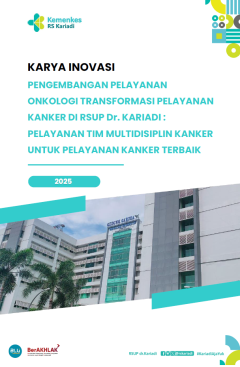
Pengembangan Pelayanan Onkologi: Transformasi Pelayanan Kanker di RSUP Dr. Ka…
Angka kejadian kanker di Indonesia terus menunjukkan tren peningkatan yang mengkhawatirkan. Saat ini, kanker menduduki peringkat ketiga sebagai penyebab kematian tertinggi di tanah air. Berdasarkan data Riset Kesehatan Dasar (RISKESDAS), prevalensi kanker meningkat signifikan, dari 1,4 per 1.000 penduduk pada tahun 2013 menjadi 1,79 per 1.000 penduduk pada tahun 2018. Kanker merupakan salah sa…
- Edition
- TAHUN 2025
- ISBN/ISSN
- -
- Collation
- -
- Series Title
- -
- Call Number
- 616.99 RSU p
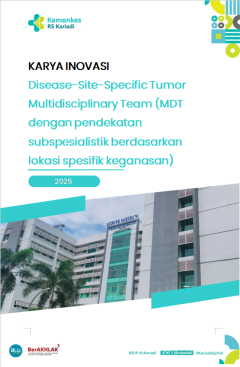
Disease-Site-Specific Tumor Multidisciplinary Team (MDT Dengan Pendekatan Sub…
Adanya kesulitan atau Pitfall dalam mendiagnosa dan manajemen terapi pasien onkologi dapat menyebabkan unplaned excision yang dapat meningkatkan morbiditas berupa local rekurensi walaupun eksisi tumor bed telah dilakukan, metastasis, amputasi, hingga kematian. Respon terapi pada pasien yang megalami rekurensi juga cenderung kurang baik. Pitfall dalam mendiagnosis suatu tumor tidak jarang ditemu…
- Edition
- TAHUN 2025
- ISBN/ISSN
- -
- Collation
- -
- Series Title
- -
- Call Number
- 616.99 RSU d
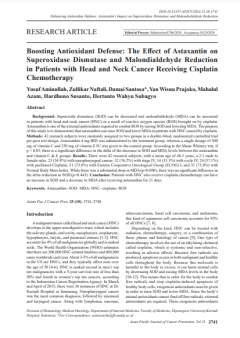
Boosting Antioxidant Defense: The Effect of Astaxantin on Superoxidase Dismut…
Background: Superoxide dismutase (SOD) can be decreased and malondialdehyde (MDA) can be increased in patients with head and neck cancer (HNC) as a result of reactive oxygen species (ROS) brought on by cisplatin. Astaxanthin is one of the external antioxidants required to combat ROS by raising SOD and lowering MDA. The purpose of this study is to demonstrate that astaxanthin can raise SOD an…
- Edition
- TAHUN 2024
- ISBN/ISSN
- -
- Collation
- -
- Series Title
- -
- Call Number
- 616.99 YUS b
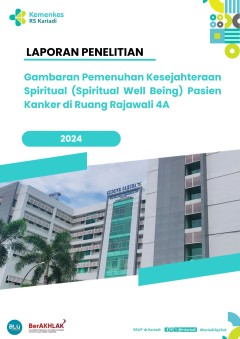
Gambaran Pemenuhan Kesejahteraan Spiritual (Spiritual Well Being) Pasien Kank…
Salah satu kebutuhan dasar yang dimiliki setiap manusia adalah spiritual (Wulandari et al., 2023). Kebutuhan Spiritual adalah hubungan antara manusia dengan sang pencipta (Raka Siwi et al., 2020). Kamus Besar Bahasa Indonesia mendefinisikan spiritualitas merupakan sumber motivasi dan emosi individu yang berkenaan dengan hubungan seseorang dengan Tuhan(Setiawan, 2019). Spiritualitas yang positif…
- Edition
- -
- ISBN/ISSN
- -
- Collation
- -
- Series Title
- -
- Call Number
- 616.99 SUB g
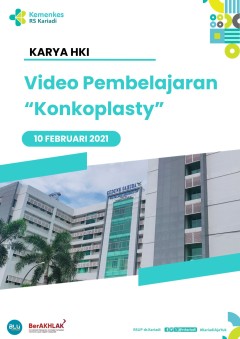
Video Pembelajaran “Konkoplasty”
Konkoplasty adalah suatu tindakan operatif yang bertujuan mengurangi volume konka inferior untuk memperbaiki aliran udara pernapasan sesuai fisiologisnyaKonkoplasty adalah suatu tindakan operatif yang bertujuan mengurangi volume konka inferior untuk memperbaiki aliran udara pernapasan sesuai fisiologisnya
- Edition
- -
- ISBN/ISSN
- -
- Collation
- -
- Series Title
- -
- Call Number
- 616.21 KON d
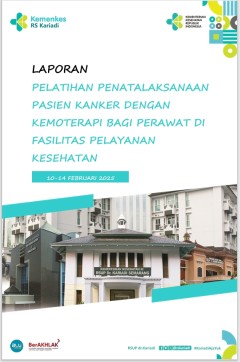
Pelatihan Penatalaksanaan Pasien Kanker dengan Kemoterapi bagi Perawat di Fas…
Salah satu modalitas terapi kanker adalah pemberian obat kemoterapi. Pemberian obat kemoterapi memerlukan manajemen khusus agar pemberiannya aman dan safety. Perawat sebagai tenaga yang memberikan obat kemoterapi memerlukan kompetensi khusus sehingga diperlukan pelatihan perawatan kemoterapi untuk memenuhi kompetensi tersebut. Seperti kita ketahui bahwa obat-obat kemoterapi selain mem…
- Edition
- TAHUN 2025
- ISBN/ISSN
- -
- Collation
- -
- Series Title
- -
- Call Number
- 615.58 IND p
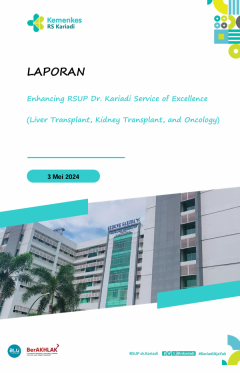
Enhancing Rsup Dr. Kariadi Service Of Excellence (Liver Transplant, Kidney Tr…
Dewasa ini perkembangan dunia kedokteran dalam bidang transplantasi liver, ginjal dan penanganan kedokteran onkologi telah semakin maju. Untuk itu perlu kiranya para dokter yang menangani pasien dengan gangguan liver, gagal ginjal dan onkologi mendapatkan pengalaman dari RS di luar negeri. Dalam rangka pengembangan ilmu kedokteran dan sejalan dengan komitmen dari RS Apollo India dan RS…
- Edition
- -
- ISBN/ISSN
- -
- Collation
- -
- Series Title
- -
- Call Number
- 616.994 Ind E
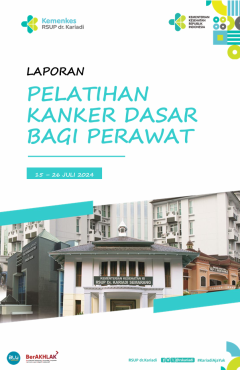
Pelatihan Kanker Dasar Bagi Perawat Tahun 2024
Kondisi kesehatan di Indonesia mengalami perkembangan yang berarti. Perubahan gaya hidup akibat era globalisasi yang dibarengi dengan ketidaktahuan akan faktor risiko penyebab yang seharusnya dapat dicegah mengakibatkan peningkatan penyakit tidak menular yang berkaitan dengan gaya hidup dan disabilitas akibat penyakit kronis seperti kanker. Hal tersebut seiring dengan meningkatnya umur …
- Edition
- -
- ISBN/ISSN
- -
- Collation
- -
- Series Title
- -
- Call Number
- 610.736 Ind P

Webinar Word Cancer Day Tahun 2024
Rumah Sakit merupakan institusi pelayanan kesehatan bagi masyarakat dengan karateristik tersendiri yang dipengaruhi oleh perkembangan ilmu pengetahuan kesehatan, kemajuan teknologi, dan kehidupan sosial ekonomi masyarakat yang harus tetap mampu meningkatkan pelayanan yang lebih bermutu dan terjangkau oleh masyarakat agar terwujud derajat kesehatan yang setinggi-tingginya. Selain melak…
- Edition
- -
- ISBN/ISSN
- -
- Collation
- -
- Series Title
- -
- Call Number
- 616.994 Ind W
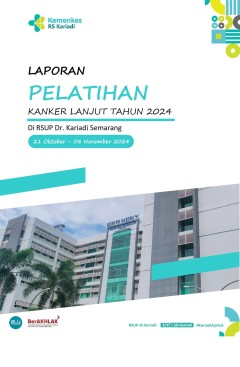
Laporan Pelatihan Kanker Lanjut Tahun 2024
Kondisi kesehatan di Indonesia mengalami perkembangan yang berarti. Perubahan gaya hidup akibat era globalisasi yang dibarengi dengan ketidaktahuan akan factor risiko penyebab yang seharusnya dapat dicegah mengakibatkan peningkatan penyakit tidak menular yang berkaitan dengan gaya hidup dan disabilitas akibat penyakit kronis seperti kanker. Hal tersebut seiring dengan meningkatnya umur …
- Edition
- -
- ISBN/ISSN
- -
- Collation
- -
- Series Title
- -
- Call Number
- 616.99406 Ind L
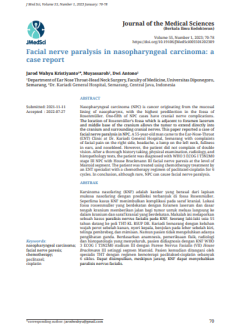
Facial Nerve Paralysis in Nasopharyngeal Carcinoma: A Case Report
Nasopharyngeal carcinoma (NPC) is cancer originating from the mucosal lining of nasopharynx, with the highest predilection in the fossa of Rosenmüller. One-fifth of NPC cases have cranial nerve complications. The location of Rosenmüller’s fossa which is adjacent to foramen lacerum and middle base of the cranium allows the tumor to extend directly into the cranium and surrounding crania…
- Edition
- -
- ISBN/ISSN
- -
- Collation
- -
- Series Title
- -
- Call Number
- 616.994 JAR f
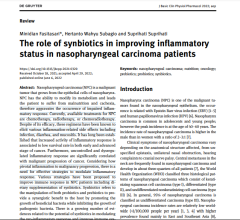
The role of synbiotics in improving inflammatory status in nasopharyngeal car…
Abstract: Nasopharyngeal carcinoma (NPC) is a malignant tumor that grows from the epithelial cells of nasopharynx. NPC has the ability to modify its metabolism and leads the patient to suffer from malnutrition and cachexia, therefore aggravates the occurrence of impaired inflammatory response. Currently, available treatments for NPC are chemotherapy, radiotherapy, or chemoradiotherapy. De…
- Edition
- -
- ISBN/ISSN
- -
- Collation
- -
- Series Title
- -
- Call Number
- 616.99 MIN t

Profile of Cachexia Parameters and Dietary Intakes in Advanced Stage of Nasop…
Background: Nasopharyngeal cancer (NPC) patients have high risk of cachexia. It is important to notice cachexia parameters in the beginning of their treatment in order to predict and anticipate unexpected outcomes. This study aimed to describe the profile of advanced stage NPC patient receiving first chemotherapy, especially in cachexia parameters and dietary intakes. Methods: A cross-sectio…
- Edition
- -
- ISBN/ISSN
- -
- Collation
- -
- Series Title
- -
- Call Number
- 616.994 MIN p

Radiotherapy Protocol of Central Neurocytoma for Resource-limited Settings in…
BACKGROUND: Central neurocytoma (CN) is one of the rarest brain tumors which can cause considerable threats to the patient. Studies and trials regarding its treatment are scarce, and no official guidelines are dedicated to this disease. The main principle of treatment generally consists of surgery and radiotherapy. The choice of radiotherapy is divided into conventional fractionated radiotherap…
- Edition
- -
- ISBN/ISSN
- -
- Collation
- -
- Series Title
- -
- Call Number
- 362.1 DIO r
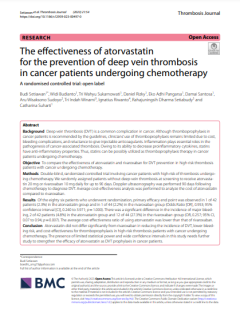
The Efectiveness of Atorvastatin for The Prevention of Deep Vein Thrombos…
Background Deep vein thrombosis (DVT) is a common complication in cancer. Although thromboprophylaxis in cancer patients is recommended by the guidelines, clinicians’ use of thromboprophylaxis remains limited due to cost, bleeding complications, and reluctance to give injectable anticoagulants. Infammation plays essential roles in the pathogenesis of cancer-associated thrombosis. Owing to …
- Edition
- -
- ISBN/ISSN
- 1477-9560
- Collation
- -
- Series Title
- -
- Call Number
- 616.15 Bud t
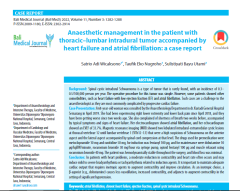
Anaesthetic management in the patient with thoracic–lumbar intradural tumor…
Background: Spinal cystic intradural Schwannoma is a type of tumor that is rarely found, with an incidence of 0.3– 0.5/100,000 person per year. The operative procedure for this tumor was simple. However, some patients showed other comorbidities, such as heart failure with low ejection fraction (EF) and atrial fibrillation. Such cases are a challenge to the anaesthesiologist as they are mos…
- Edition
- -
- ISBN/ISSN
- -
- Collation
- -
- Series Title
- -
- Call Number
- 617.9 SAT a

The relationship between nutritional status before chemotherapy with nutritio…
Background: Malnutrition in nasopharyngeal carcinoma (NPC) patients is caused by various factors such as tumor localization, metabolic derangement, and side effects of therapy. Poor nutritional status in cancer patients is associated with serious clinical consequences such as poor quality of life, higher treatment toxicity, and poor prognosis. The purpose of this study was to determine the e…
- Edition
- -
- ISBN/ISSN
- 2302-2914
- Collation
- -
- Series Title
- -
- Call Number
- 616.994 Fel t
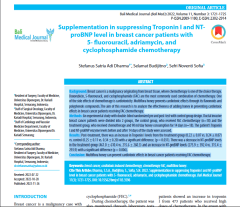
Supplementation in suppressing Troponin I and NTproBNP level in breast cancer…
Background: Breast cancer is a malignancy originating from breast tissue, where chemotherapy is one of the choice therapy. Doxorubicin, 5-fluorouracil, and cyclophosphamide (FAC) are the most commonly used combination of chemotherapy. One of the side effects of chemotherapy is cardiotoxicity. Multiflora honey prevents cardiotoxic effects through its flavonoids and polyphenols compounds. The …
- Edition
- -
- ISBN/ISSN
- -
- Collation
- -
- Series Title
- -
- Call Number
- 618.19 STE s

Giant Deep Aggressive Angiomyxoma of the Vulva : A rare case report
Background: Deep Aggressive Angiomyxoma (DAA) is a rare benign tumor with about 250 cases reported worldwide. It was first reported in 1983. This tumor is commonly found in women of reproductive age, with the highest incidence in the 3rd and 4th decades of life. DAA is most often found in the pelvic, genital, inguinal region, or perineum. Case Report: Nulligravida woman 52 years old, with en…
- Edition
- -
- ISBN/ISSN
- -
- Collation
- -
- Series Title
- -
- Call Number
- 618.1 CLA c
 Computer Science, Information & General Works
Computer Science, Information & General Works  Philosophy & Psychology
Philosophy & Psychology  Religion
Religion  Social Sciences
Social Sciences  Language
Language  Pure Science
Pure Science  Applied Sciences
Applied Sciences  Art & Recreation
Art & Recreation  Literature
Literature  History & Geography
History & Geography